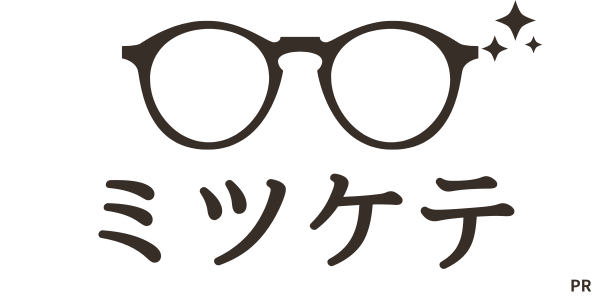Government benefits for tax-exempt households are making headlines, but many people are unsure if they qualify. This article clearly explains the income thresholds for exemption and whether someone earning 3.5 million yen per year could be eligible.
What Is a Household Exempt from Resident Tax?
A household exempt from resident tax is one in which all members of the household are not subject to resident tax. Resident tax is calculated based on the previous year’s income, and those below a certain income level are exempt. Being exempt can make a household eligible for government subsidies, municipal assistance programs, and discounts on public utilities, providing important financial relief.
Resident tax is made up of two parts: the income-based portion and the per capita portion. A household is considered tax-exempt when both of these amounts are zero. The income-based portion depends on annual earnings, while the per capita portion is a fixed amount levied on everyone. When both are waived, the household is classified as non-taxable.
Main Criteria for Tax Exemption
The criteria for exemption vary depending on the number of dependents and family composition. Below are approximate national benchmarks.
| Family Type | Approximate Annual Income (Tax-Exempt Threshold) |
|---|---|
| Single person | About 1,000,000 yen or less |
| Married couple (with spouse deduction) | About 1,550,000 yen or less |
| Couple + 1 child | About 2,050,000 yen or less |
| Couple + 2 children | About 2,550,000 yen or less |
These amounts are general estimates. Actual thresholds differ slightly among municipalities, and deductions such as for dependents, disabilities, or single parents can raise the limit.
In some cases—such as households relying mainly on part-time income—income deductions can make them tax-exempt even if total earnings are higher. For instance, two people earning 2 million yen annually may fall below the threshold after social insurance and medical expense deductions.
Are People Earning 3.5 Million Yen per Year Eligible?
An annual income of 3.5 million yen is close to the national average for salaried workers. In this case, the income level far exceeds the exemption threshold, so it is classified as a taxable household.
However, there are exceptions. If you are supporting a disabled person or elderly family member, or if your income temporarily drops due to illness or job loss, you may qualify as a “household equivalent to a non-taxable household.”
The following table shows how households earning 3.5 million yen are generally categorized:
| Family Type | Annual Income | Status | Classification |
|---|---|---|---|
| Single | 3.5 million yen | Exceeds threshold | Taxable |
| Couple only | 3.5 million yen | Exceeds threshold | Taxable |
| Couple + 1 child | 3.5 million yen | Still taxable after deductions | Taxable |
| Couple + 2 children | 3.5 million yen | Some relief from deductions | Taxable |
As seen above, households with an annual income of 3.5 million yen exceed the exemption level, though deductions may slightly reduce the overall tax burden.
Key Points for Determining Tax-Exempt Status
Whether resident tax is applied depends not on gross income but on “taxable income after deductions.” In other words, after subtracting social insurance payments, dependent deductions, and other allowances, the remaining amount determines whether a household is exempt.
Common deductions include the following:
| Type of Deduction | Description | Maximum Amount |
|---|---|---|
| Social insurance | Health insurance, pension, etc. | Full amount paid |
| Dependent deduction | For supporting spouse or children | Up to 630,000 yen |
| Medical expenses | Medical costs exceeding 100,000 yen per year | Up to 2 million yen |
| Life insurance | Life or pension insurance payments | Up to 120,000 yen |
If the remaining taxable income falls below the municipal tax threshold, the household becomes exempt. Checking the “income after deductions” on your payslip or withholding statement is essential.
Overview of the Benefit System
To address rising living costs and energy prices, the government provides cash payments to households exempt from resident tax or those equivalent to them. For example, in 2024, the Cost-of-Living Relief Payment granted 100,000 yen per household.
Eligibility is based on the previous year’s income being below the exemption level, or on a sudden decrease in income making a household “tax-exempt equivalent.” Some municipalities pay automatically, while others require applications—checking local government announcements and applying within the deadline is crucial.
| Eligible Group | Benefit Details | Notes |
|---|---|---|
| Tax-exempt household | 100,000 yen per household | May be automatically granted |
| Equivalent household | For those with reduced income | Application required |
| Student household | May be ineligible if dependent on parents | Check with local office |
Although the payment is typically one-time, additional support may be introduced if high prices continue.
How to Check If You Are Tax-Exempt
The most reliable way to confirm your status is by reviewing the Resident Tax Decision Notice (住民税決定通知書). This document, issued every June by your city or town, shows whether both the income-based and per capita portions are zero. If so, your household is tax-exempt. Lost notices can be reissued at city offices.
Those with a My Number Card (マイナンバーカード) can also verify their status online through Myna Portal (マイナポータル). Many municipalities now allow residents to check their tax status via smartphone.
| Verification Method | Required Items | Features |
|---|---|---|
| Tax Decision Notice | Mailed document | Most accurate confirmation |
| Myna Portal | My Number Card | Accessible online |
| Local government office | ID required | In-person help and reissue available |
Preparing for Future Support Programs
With inflation and utility costs likely to remain high, support for tax-exempt households is expected to continue. Even if you are not exempt, there are still programs available for low-income or child-rearing households.
Examples include electricity and gas bill discounts, childcare subsidies, and local housing aid. Consulting your municipal welfare or community support center can help identify programs that apply to your situation.
Conclusion
The benchmark for a tax-exempt household is roughly 1 million yen or less for single individuals and about 2.55 million yen or less for a four-person family. With an annual income of 3.5 million yen, you are typically classified as taxable, though temporary income reductions or large deductions may make you eligible for certain benefits.
To receive support, check your Resident Tax Notice or verify online through Myna Portal, and make sure you understand the criteria specific to your municipality. Being proactive about your eligibility is the first step toward accessing available aid.
Ultimately, protecting your financial stability starts with understanding what “tax-exempt household benefits” truly mean and how they relate to your situation. By staying informed and applying for programs promptly, you can make the most of the assistance available to you.




